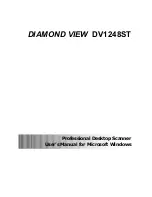
-20
(2) TYPE Definition
The following table lists all TYPE definition that function used.
Definition Introduction
typedef
struct
{
unsigned
char
data[TAG_LENGTH];
} SUNLITRFID_TAGID;
Type definition of tag ID
Since Mu-ID data is represented by 128 bits
format, so we condense this 128 bit information
by byte format. And every 8 bits data is
respectively each byte, for example, data[0]
represents bit120~bit127; data[1] represents
bit112~bit119; data[TAG_LENGTH-1]
represents bit0~bit7.
typedef
struct
{
HANDLE
haEvent[ENVIRONMENT_EVENT_NUMBER];
SUNLITRFID_TAGID ActiveTagID;
} SUNLITRFID_ENVIRONMENT;
Type definition of enviroment status.
The type has two elements: haEvent and
ActiveTagID.
haEvent is HANDLE array that use for wait
events. For more information, Please see
EVENTS Introduction.
ActiveTagID was introduced at above definition.
typedef
struct
{
char
data[PRODUCT_NAME 1];
} SUNLITRFID_PRODUCT_NAME;
Type definition of product name information.
After function executed successfully. The char
array will be added the end of string character
‘0x00’
typedef
struct
{
char
data[MODEL_NAME1];
} SUNLITRFID_MODEL_NAME;
Type definition of Model Name
After function executed successfully. The char
array will be added the end of string character
‘0x00’
typedef
struct
{
char
data[HARDWARE1];
} SUNLITRFID_HARDWARE_VER;
Type definition of hardware version
After function executed successfully. The char
array will be added the end of string character
‘0x00’
typedef
struct
{
char
data[FIRMWARE1];
} SUNLITRFID_FIRMWARE_VER;
Type definition of firmware version
After function executed successfully. The char
array will be added the end of string character
‘0x00’
















































